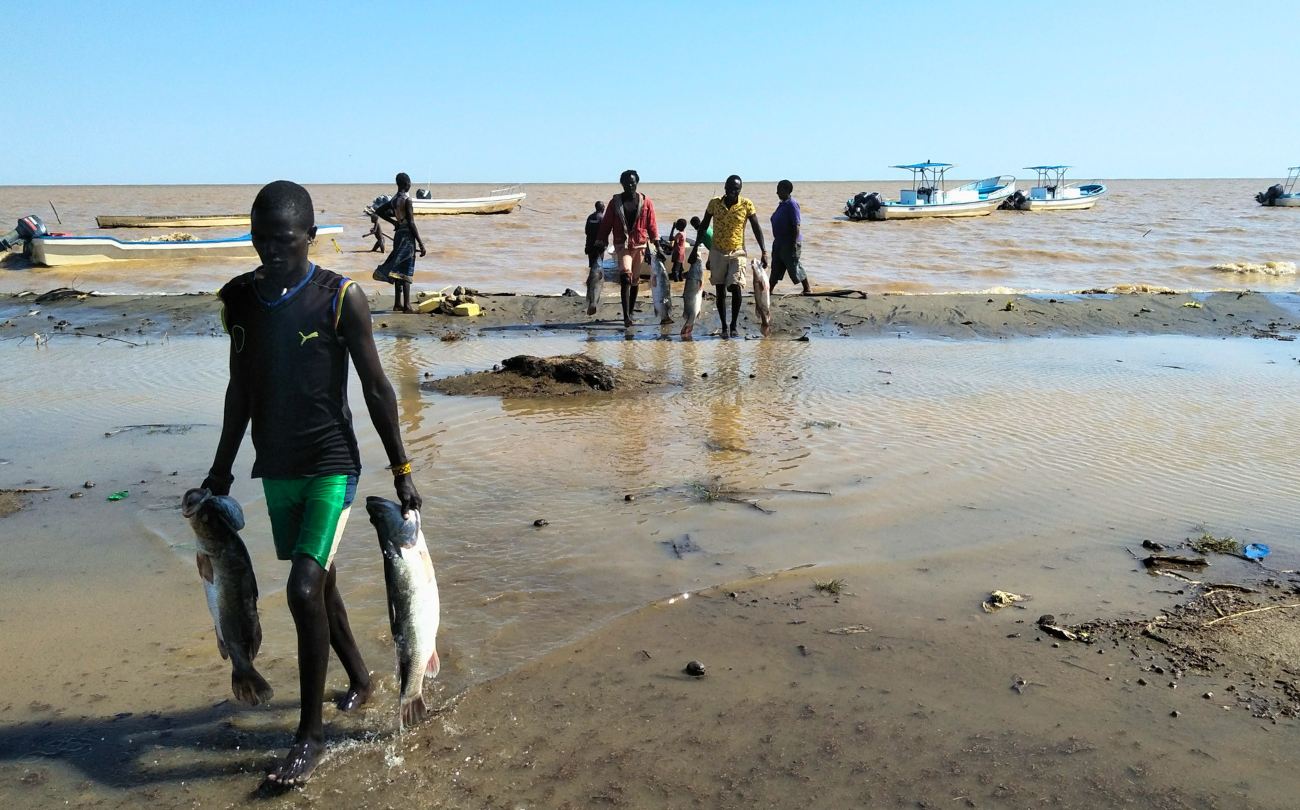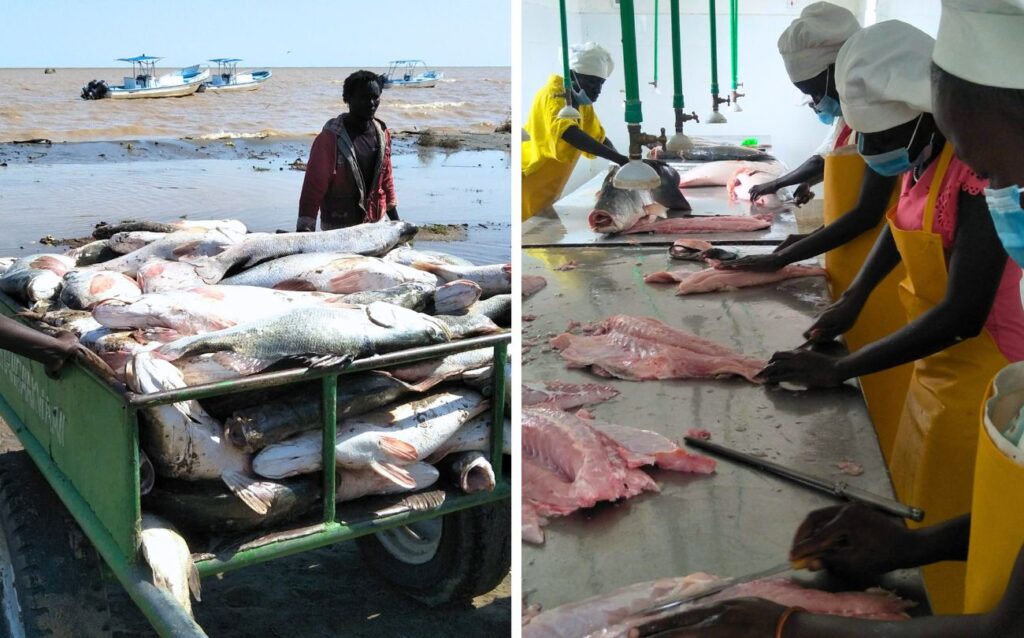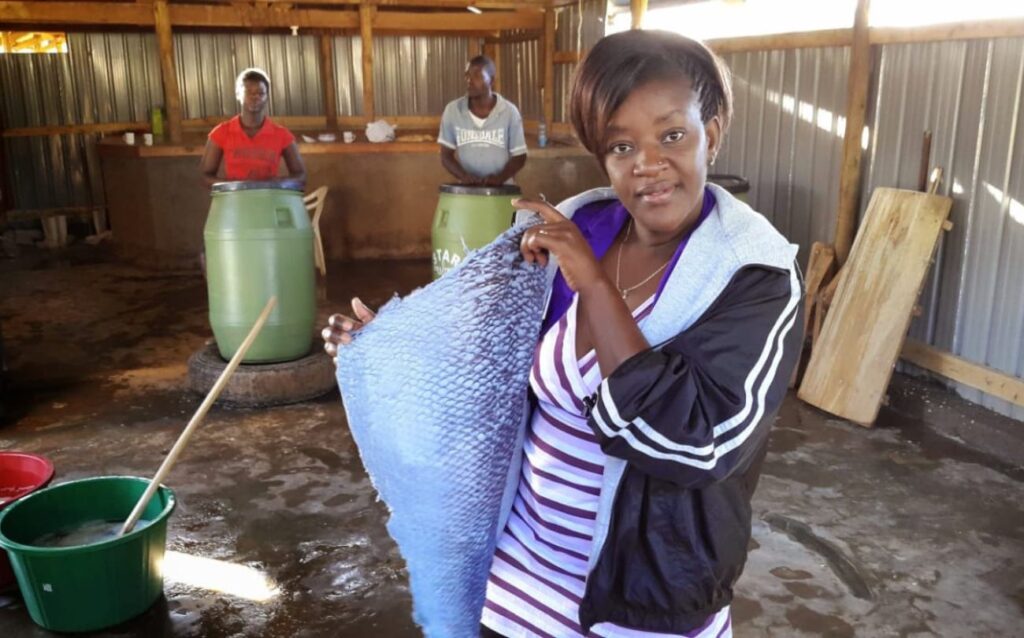
02 Sep When Hunger Came – and the Lake Became a Lifeline
In northern Kenya, there were times so dry that the earth cracked open under the sun. Plants and livestock died, and families lost every sense of security. According to the BBC, around 1.1 million people were affected by acute food shortages. In 2017, one in eight children under the age of five was considered malnourished, according to Welthungerhilfe.
“There was a sense of despair,” recall James and Ira Ambani, remembering the situation in their homeland. The same memory is shared by our network partner Elvira, who became aware of the crisis through her work with the World Food Programme. “The crisis went far beyond everyday poverty.”
THE LAKE AS A NEW BEGINNING – FISHING AS A NEW WAY OF LIFE
In the midst of crisis, a new perspective began to take shape: Lake Turkana — the world’s largest desert lake. Until then, it had remained largely untouched and unused, yet it held the potential to bring real change.

With support from the Food and Agriculture Organization of the United Nations (FAO), local communities received the infrastructure they needed — nets, boats, and cold storage facilities.
Community empowerment followed, with training sessions led by skilled instructors. New jobs were created, and fishing, aquaculture, and processing became life-changing skills for the people of the region.

Little by little, fishing replaced traditional livestock farming — and the desert lake became the region’s lifeline.
But with every catch, a new challenge emerged: what to do with the leftovers? The fish itself was fully used — the meat filleted and eaten, bones and scraps turned into animal feed. Yet the skin was discarded in huge quantities, piling up as waste. Mountains of fish skin, with no purpose — at least, not yet.
FROM DISCARDED FISH SKIN TO A SUSTAINABLE MATERIAL
Ira and James Ambani saw yet another opportunity in the situation. “We asked ourselves how we could make use of the skin — give it a new purpose. And the answer was: leather! We learned that in Iceland, for example, fish leather has been used for centuries.”
Their idea led to the first experiments — at first with improvised means, later with proper training and improved tools. Women washed the skins in simple tubs, learned to cut and preserve them, while ice machines and cooling facilities kept the catch fresh.

Today, the process has matured: clean workshops, trained specialists, and zero waste of this valuable material.
What began as a survival strategy has evolved into Ambani Fish Leather — a pioneering enterprise that stands for sustainability, resilience, and pride in what has been created.
Today, Ambani employs more than twenty people — most of them women. Many had no formal education or paid work before. Now, they are trained, skilled, and proud of what they do. Wearing aprons and gloves, they clean, dye, and transform fish skin into accessories and bags. For the first time, they earn their own income — and their voices carry weight within their families and communities.

FROM TURKANA TO THE WORLD
What began on the shores of Lake Turkana now reaches far beyond Kenya. Designers, sustainability initiatives — and we at SoRarePieces — are proud to help carry this collection out into the world.
A wallet or piece of jewelry made from fish leather is more than an accessory. It’s a symbol of resilience, of transformation — and of the quiet certainty that change is possible.
👉 Discover our Ambani collection in the shop!



No Comments